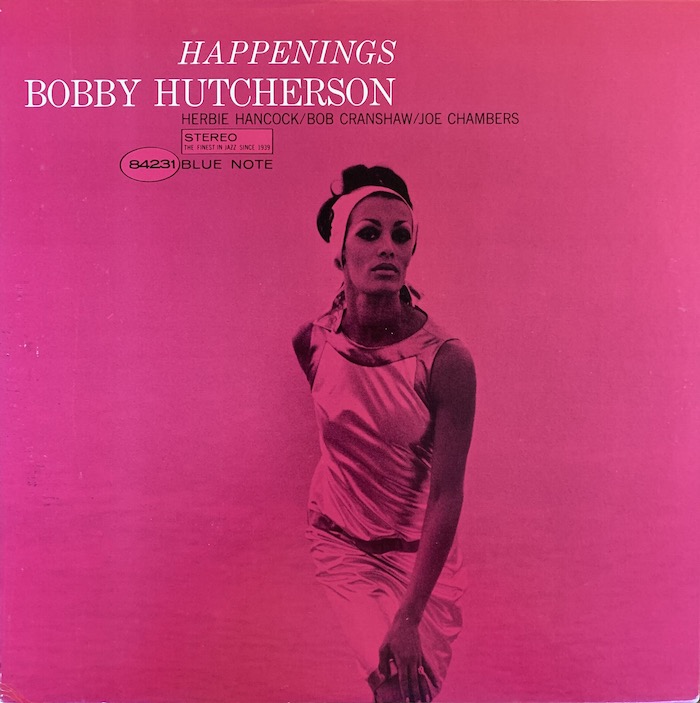
In his last post, Dan focussed on the fantastic track ‘Ghetto Lights’ from Bobby Hutcherson’s debut album as leader on Blue Note. Today’s post is another offering from the master of vibes, this time from his third album Happenings (1966) which saw him taking more of a commercial approach in comparison to his previous two albums which were much freer and avant-garde.
What makes Happenings such a satisfying and engaging listen is how Hutcherson and his group (Herbie Hancock on keys, Bob Cranshaw on bass, Joe Chambers on drums) manage to touch on a variety of musical styles across only seven tracks. The album roars straight out the gates with the driving ‘Aquarian Moon’ (inspired by Hutcherson’s Zodiac sign), a stark contrast with the beautiful and pensive ‘Bouquet’, an Eric Satie inspired waltz. On the third track ‘Rojo’, Hutcherson and his group explore latin jazz which is followed by a beautiful version of Herbie Hancock’s classic ‘Maiden Voyage’ (more on this in a moment). The energy picks up again on the cool swinging ‘Head Start’, a contrast to the moody ballad ‘When You Are Near’ which follows. The closing track ‘The Omen’, as the name suggests, is an ominous affair which sees the band exploring the realms of free jazz and the avant-garde. A close examination of the liner notes reveals Herbie Hancock plays ‘a box full of rocks’. Avant-garde indeed. All tracks on Happenings are Hutcherson originals with the exception of ‘Maiden Voyage’.
The composition ‘Maiden Voyage’ first appeared on Herbie Hancock’s 1965 album of the same name, also on Blue Note. Interestingly though, Hutcherson had not heard Hancock’s album when he recorded his version, instead inspired to cover the tune after hearing it on an advert for cologne. Whilst Hancock’s original has a horn section, Hutcherson’s version is just him and a rhythm section, allowing him to shine as both a soloist and leader. His vibraphone playing has a beautiful, ethereal quality to it and really suits the idea of a boat sailing out to sea. The cover art of Happenings also echoes the mysterious qualities of Hancock’s album art, with the blurred photo of a man in a yacht being replaced by an image of a beautiful woman, floating alone in a sea of intense pink. The simplicity and elegance of the album artwork particularly pops, making it one of my favourites in the Blue Note catalogue.
After recording Happenings, Hutcherson went on to have one of the longest recording careers on Blue Note, second only to pianist Horace Silver, another musician we will no doubt encounter in a future post. Hutcherson’s musical output always flirted with the avant-garde but never went so far out as to lose the listener. He is widely recognised as pushing the boundaries of what the vibraphone could accomplish in jazz which has led musicians such as Joey DeFrancesco to label him the John Coltrane of the vibes because he took it to the next level (Ouellette, Dan. “California Dreaming.” DownBeat 80.4 (2013): 30-33. Print.).
When listening to Bobby Hutcherson, one thing is certain: it’s always a vibe.
If you enjoyed this post and want to stay updated, make sure to subscribe to our Spotify playlist and follow us on Instagram and Twitter!
